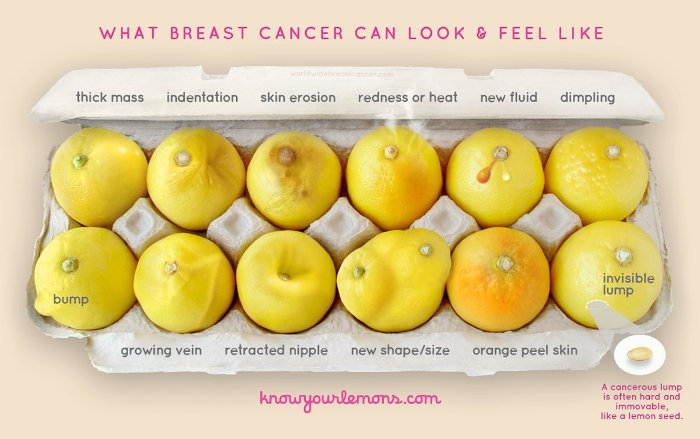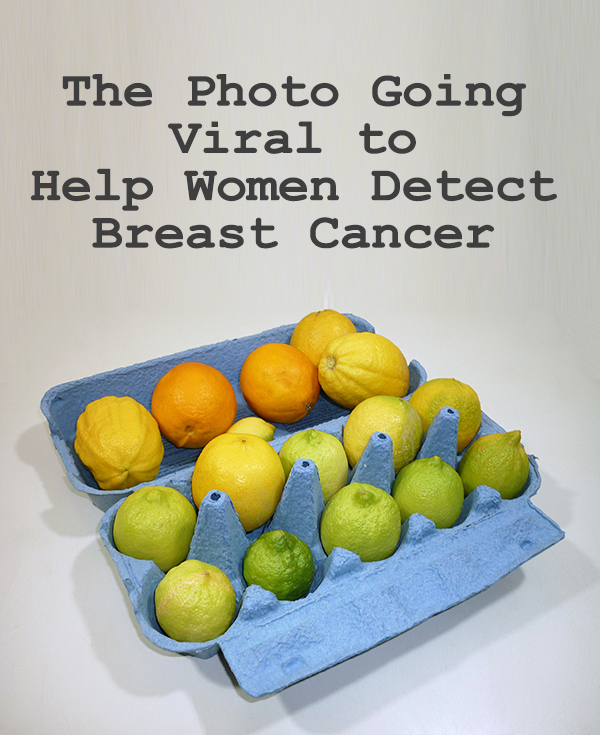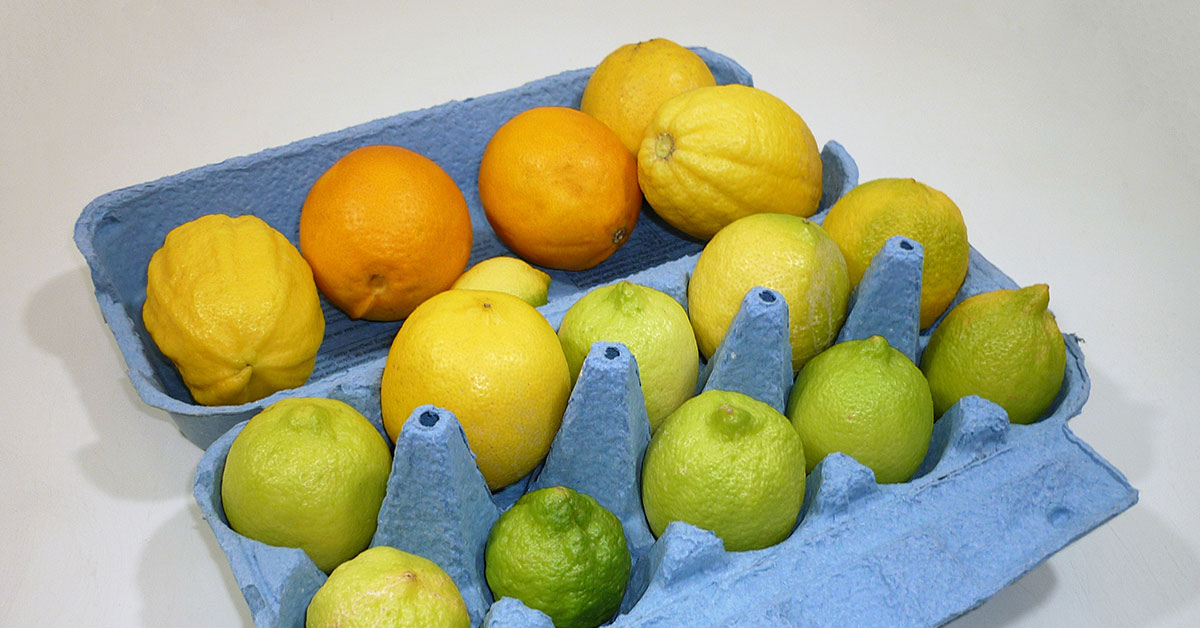Breast cancer is something that both women and men should be on the lookout for every day. If caught early, the rate of survival is much higher than if it’s found late. It’s important to catch cancer early because treating it quickly will prevent it from progressing to a much more dangerous stage of breast cancer. With that said, did you know that lemons can help identify breast cancer? It sounds a little odd, and it might not be what you think, so read on to find out.
For patients diagnosed with stage 0 or stage I breast cancer, the five-year survival rate is close to 100%. For women diagnosed with stage II breast cancer, the five-year survival rate is about 93%. And women diagnosed with stage III breast cancer have a five-year survival rate of about 72%. As cancer progresses through its various stages, it becomes harder and more invasive to treat. For example, stage IV breast cancers only have a five-year survival rate of about 22%. (2)
While these rates can’t exactly predict what will happen to anyone, it’s important to know that catching breast cancer early makes all the difference in a patient’s prospects. So, what should you be looking for? It’s not just about finding a mass. There are many signs and symptoms to look for, and that’s where this viral lemon picture that can help identify breast cancer comes in. (1)
Lemons Identify Breast Cancer? How to Help Spot It Early

What Breast Cancer Can Look and Feel Like
Thick mass
You should always check for lumps in your breasts, but you should see your doctor immediately if you find a thick mass near the skin. Sometimes lumps are seen on a screening mammogram before they can be felt, so it’s important to have your regular screenings with your doctor. The mass may feel like it is attached to the skin or chest wall and cannot be moved. It may also feel hard, irregular in shape, and very different from the rest of the breast tissue. It may also be tender, but usually, it is not painful (3).
Indentation
It’s possible that the early stages of breast cancer could cause some breast indentation. If you notice a change in your breasts in this way, consult your doctor immediately. It could be very subtle, but any indents could indicate early breast cancer signs (8).
Skin erosion
There are often signs on the skin to indicate the presence of breast cancer. Any skin erosion or irritation should be investigated immediately. If you experience any skin erosion on the breast, consult your doctor (8).

Redness or heat
If you experience any redness or heat on the breast, this could indicate inflammatory breast cancer and be looked into immediately. This might look like an infection or other illness but is also present with breast cancer onset (8).
New fluid
Discharge from the nipples can be caused by many conditions, most of which are non-cancerous. However, discharge from one nipple may signify breast cancer, especially if it appears without squeezing the nipple and is bloodstained. If you experience any fluid coming from your nipple, it’s important that you seek medical attention (3).
Dimpling
Dimples showing up on your breasts is another sign of the early onset of breast cancer. It might be very subtle and hard to notice, so you should be extra vigilant when inspecting your breasts. If you notice any dimpling on your breasts, you should go to your doctor immediately (7).
Bump
Perhaps more obvious as an indication of cancer is if you find a bump on your breasts. You should investigate every bump that you find on your breasts and run it by your doctor as soon as possible.
Growing vein
If you notice that the veins in your breasts have increased in prominence or look particularly stressed, this could be an indication of the early onset of breast cancer. Changes in veins can be a sign that cancer is blocking a blood vessel (4).
Retracted nipple
This condition can result from inflammation or scarring of the tissue behind the nipple and can be caused by several things, not just cancer. But in breast cancer, nipple retraction happens when the tumor attacks the duct behind the nipple, pulling it in. You should report this to your doctor immediately when you notice this (5).
New shape or size
Any changes in shape or size should be cause for a doctor visit. In the early stages of breast cancer, the breasts can go through various changes, including adopting a new shape or changing in size. So you should inspect yourself often to have a proper understanding of what your body is usually like.
Orange peel skin
An indication that breast cancer is starting is if the skin takes on an orange peel-like appearance. It should be quite noticeable, but it could be a sign of inflammatory breast cancer. Any changes in your breast that look like this should be investigated with your doctor (6).
Invisible lump
This is the reason you should receive regular mammograms because the lump can be invisible and hard to detect with self-examinations. But a cancerous lump is often hard and immovable like a lemon seed.
This information is not intended to be a substitute for professional medical advice, diagnosis or treatment. Always seek the advice of your physician or another qualified health provider with any questions about your medical condition and/or current medication. Do not disregard professional medical advice or delay seeking advice or treatment because of something you have read here.
Keep Reading: I Don’t Want To Circumcise My Son But My Family Strongly Disagrees
Sources
- “What breast cancer can look and feel like.” Pop Sugar Perri Konecky. January 16, 2017.
- “Breast cancer survival rates.” Cancer.org. January 23, 2017.
- Canadian Cancer Society.
- The breast cancer danger signs many haven’t heard of: Women need to be vigilant about subtle skin texture changes.” Mail Online Published: August 15, 2015. Accessed: January 23, 2017.
- “Nipple Retraction.” Breast Cancer News. January 23, 2017.
- “Symptoms of Inflammatory Breast Cancer.” Breastcancer.org. January 23, 2017.
- “Skin Dimpling: Is It Breast Cancer?” Healthline. January 23, 2017.
- “Breast Cancer Signs and Symptoms” WebMD. January 23, 2017.

